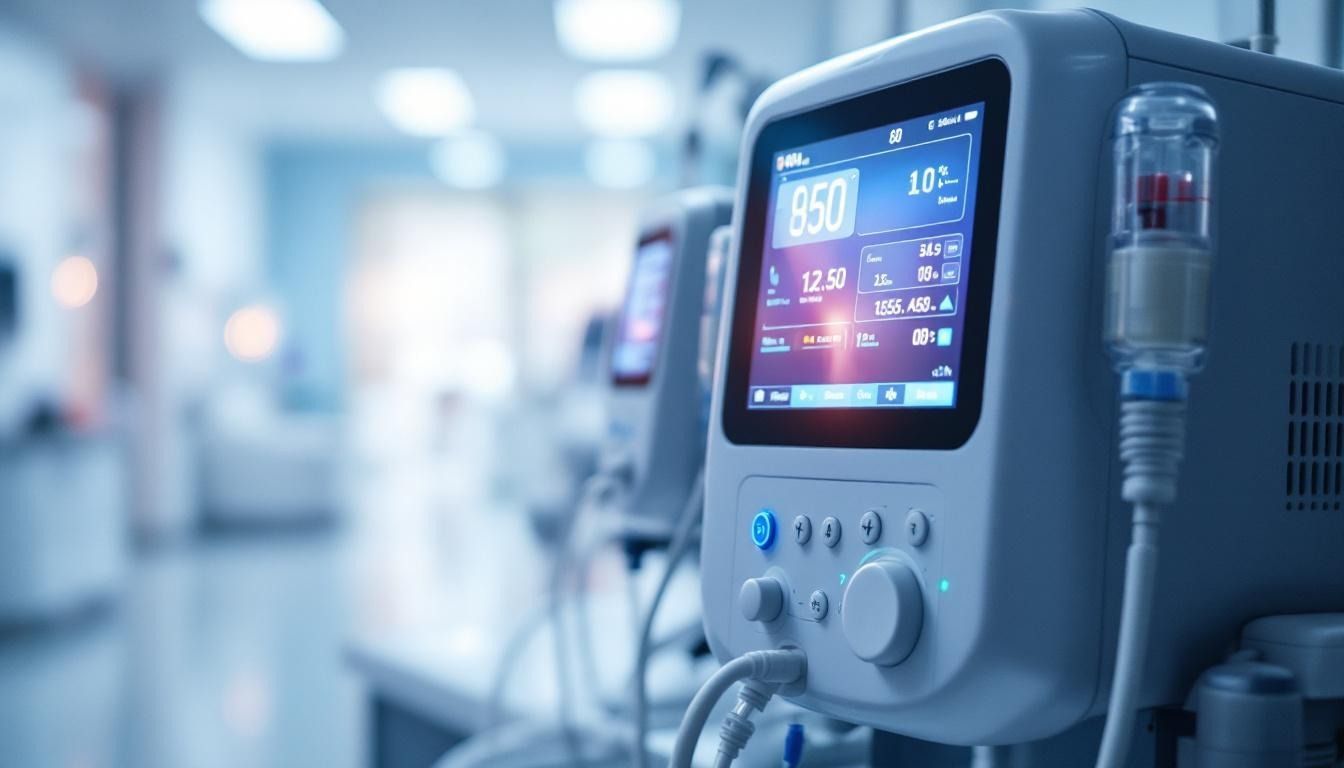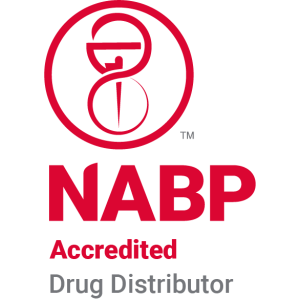TPN support during natural disasters
Understanding the Importance of Disaster Preparedness for TPN Patients
Natural disasters pose significant challenges to home care and nutritional support for individuals dependent on Total Parenteral Nutrition (TPN). Ensuring their safety, maintaining continuous nourishment, and preparing adequately are critical aspects that both patients and healthcare providers must address before an emergency occurs. This article explores best practices, resources, and scientific insights to support TPN-dependent individuals during natural disasters, emphasizing proactive planning and resource management.
The Role of TPN in Critical Support and Its Limitations During Disasters

Is TPN considered life support?
Total parenteral nutrition (TPN) is an essential treatment for patients who cannot obtain adequate nutrition through their gastrointestinal (GI) tract. However, it is generally not classified as a form of life support. TPN provides nutritional sustenance, supporting the body in cases of severe GI failure, cancers affecting the digestive system, or other complex health conditions.
Unlike devices such as ventilators or dialysis machines, which directly sustain vital organ functions, TPN does not replace or support the core functions of the heart, lungs, or kidneys. Its primary role is nutritional. In critical scenarios—like severe bowel damage or malabsorption—TPN can be lifesaving, but it remains supportive rather than lifesaving in the strictest sense. Supporting nutritional needs helps maintain body strength and immune function, but TPN alone does not guarantee survival if other vital functions fail.
Situations when TPN should not be used
During disasters or in specific health circumstances, it’s crucial to recognize when TPN might not be appropriate. One such situation is in cases of severe infection or sepsis. Administering TPN in such conditions can worsen the situation because it may suppress the immune response or provide a medium for bacterial growth.
Additionally, if a patient has critical organ failure, such as advanced liver or kidney disease where alternative supportive therapies are available, the use of TPN might be reconsidered based on overall medical judgment. It’s also important to note that in the context of supply disruptions during disasters, continued TPN administration may be challenged by shortages of supplies or power, making it imperative to have contingency plans.
Emergency planning for TPN users
In disaster scenarios, patients dependent on TPN should have a structured emergency preparedness plan. This includes keeping an adequate stock of supplies for 3-4 days, such as TPN formulas, bottled water for hygiene and hydration, and backup power sources for infusion pumps. Maintaining a comprehensive emergency health information card with personal and medical details is vital.
Home care providers play a critical role in assisting patients with planning. They help ensure patients understand when and how to seek help, manage supply shortages, and coordinate with healthcare providers for possible relocations or alternative nutrition delivery methods. Using premixed, non-refrigerated TPN products like Clinimix or Kabiven/Perikabiven can be beneficial during supply chain disruptions.
Resources and further guidance
For more detailed strategies on disaster preparedness for TPN users, consulting resources such as the "Disaster Preparedness Guidelines for TPN Support" can provide practical insights. Proper planning, communication, and resource management help ensure that vulnerable individuals maintain necessary nutrition even in challenging times, emphasizing the importance of emergency readiness among TPN-dependent patients.
Planning and Preparation for Disruption of TPN Services

Creating comprehensive emergency plans for TPN patients
Individuals dependent on home parenteral nutrition (TPN) need to be well-prepared for emergencies, as natural disasters and other crises can disrupt essential services like water, electricity, and supply deliveries. Home care providers play an important role in assisting patients to develop detailed disaster response plans. These plans should outline steps for maintaining nutrition, hydration, and medical supplies during unforeseen events.
Patients should identify local emergency contacts, including healthcare providers and family members, and establish communication methods, such as an emergency health information card that details their medical conditions, allergies, medications, and physician contacts. Furthermore, planning for potential relocations or evacuations is crucial, especially for fragile or pediatric patients.
The importance of stockpiling supplies such as HPN, HEN, and backup power sources
A central aspect of disaster preparedness for TPN and HEN users is maintaining an adequate stock of supplies. Patients should have at least 3-4 days’ worth of TPN or enteral feeding supplies, including premixed products that do not require refrigeration, like Clinimix or Kabiven/Perikabiven. Having backup options ensures continuous nutrition if compounded products cannot be accessed.
Hydration is equally critical; patients should keep bottled water not only for drinking but also for hygiene purposes. Additionally, securing backup power sources—such as batteries or fuel-powered generators—is vital to keep pumps, refrigerators, and other electronic devices operational during power outages.
Creating a prepared kit that includes supplies like catheter dressing kits, syringes, medications, emergency hydration options, and a copy of the TPN formula prescription is advised. These measures help ensure that, even in severe disruptions, patients can sustain their nutritional needs and manage their health until normal services resume.
Managing Supplies and Infrastructure During Natural Disasters

Maintaining adequate supplies of nutritional and medical essentials
For individuals relying on home parenteral nutrition (TPN) and enteral nutrition (HEN), having a stockpile of critical supplies is crucial. They should prepare for emergencies by keeping enough HPN supplies to last three to four days, including medications and nutritional formulas. Bottled water for hydration and hygiene, as well as backup power sources for pumps, are essential. These preparations help ensure continuity of care even when supply chains are disrupted.
Safe storage and rotation of emergency supplies
Storing emergency supplies properly can make a significant difference during disasters. It’s recommended to keep these supplies in waterproof containers and to periodically check expiration dates. Regular rotation of stock ensures that supplies such as medications, enteral formulas, batteries, and pumps remain fresh and usable when needed. Having these supplies organized and accessible allows for swift action during emergencies.
Utilizing premixed PN products that do not require refrigeration
In disaster scenarios where refrigeration may be unavailable or unreliable, premixed parenteral nutrition products like Clinimix or Kabiven/Perikabiven offer reliable alternatives. These products do not require refrigeration and can be stored at room temperature, providing sustained nutrition for patients dependent on TPN. Using such options ensures that patients continue receiving essential nutrients even when standard compounded solutions cannot be delivered.
| Supplies Needed | Storage Recommendations | Additional Details |
|---|---|---|
| TPN and HEN supplies | Waterproof containers, cool, dry place | Rotate supplies regularly to prevent expiration |
| Bottled water | Keep in accessible, waterproof storage | Use for hydration and hygiene |
| Backup power sources | Fuel-powered generators or batteries | Power for pumps, devices, communication tools |
| Premixed PN products | Room temperature storage | Examples include Clinimix, Kabiven/Perikabiven |
| Enteral feeding supplies | Store in designated kits | Extra bags, formulas, batteries |
Preparedness and proper resource management are vital during natural disasters, especially for patients dependent on specialized nutritional and medical care. Having a well-organized plan ensures they maintain their health and safety when facing emergencies.
Guidelines and Resources for Families and Healthcare Providers
Are there specific resources or guidelines for disaster preparedness for TPN support?
Yes, there are tailored resources and comprehensive guidelines to help families and healthcare providers prepare for emergencies involving TPN support. Healthcare institutions such as Children’s Hospital Los Angeles provide detailed educational materials, including checklists for assembling emergency kits, maintaining updated medical records, and securing secondary power sources for pumps and refrigerators. These resources emphasize having at least a 3-4 day supply of TPN, backup batteries, bottled water, and alternative IV access plans.
National organizations like the American Academy of Pediatrics, FEMA, and the Centers for Disease Control and Prevention (CDC) offer extensive guidance, including printable family readiness checklists, evacuation plans, and educational tools designed for all ages. Websites like Ready.gov and FEMA feature age-appropriate activities, multilingual resources, and downloadable flyers to aid in emergency planning.
Specialized resources from networks such as the National Child Traumatic Stress Network are focused on supporting children and their families during disasters. These tools help caregivers manage psychological impacts and ensure continuous medical care during disruptions.
Creating a solid disaster preparedness plan involves understanding these tools and customizing them to fit individual needs. Ensuring everyone in the household knows how to access emergency supplies, communicate in case of separation, and understand their medical needs is crucial.
In summary, numerous reputable sources provide practical checklists, educational materials, and planning guides specifically for TPN patients, helping them maintain resilience and safety during emergencies.
Community and Policy Support Measures During Disasters
What special waivers and flexibilities exist in food and nutrition programs during disasters?
During emergencies, the federal government often activates special waivers to adapt meal distribution and nutrition assistance programs. Schools can implement alternative meal service methods such as grab-and-go options, food delivery, and community distributions to ensure children receive necessary nutrition even when traditional services are disrupted.
Children displaced by natural disasters may be automatically eligible for free school meals without completing additional paperwork. These benefits are extended for the rest of the school year and into the following month.
Additionally, federal programs like the Disaster SNAP (D-SNAP) provide supplementary food assistance to families affected by disasters. These benefits are automatically applied to eligible recipients’ SNAP cards, and families recovering from disasters can request replacement benefits, often within a 10-day window.
How do emergency meal services support displaced families?
In disaster scenarios, emergency meal services help maintain food security for displaced families. Temporary shelters participate in programs such as the Child and Adult Care Food Program (CACFP), allowing children under age 18 to receive up to three free meals per day.
Flexibilities also extend to meal service requirements, permitting, for instance, the offering of meals without milk or with alternative products if needed. These adaptations ensure that children in transition or affected areas do not face hunger during crises.
Claiming reimbursements for these meals can be extended beyond normal deadlines, and disaster-related record loss is accommodated through documented submissions. Regional agencies such as FNS (Food and Nutrition Service) oversee and approve these extensions and waivers to ensure that nutritional support continues efficiently during times of crisis.
Policy support efforts in disaster management
Policy measures include establishing emergency communication channels, deploying rapid response systems like D-RAPCON for air traffic management, and creating preparedness plans that include stockpiling essential supplies like food, water, medications, and backup power sources. These initiatives are designed to stabilize communities quickly and provide ongoing support for vulnerable populations.
| Program/Measure | Purpose | Additional Details |
|---|---|---|
| D-SNAP | Food assistance | Automatic activation, benefits automatically added to SNAP cards |
| School Meal Flexibilities | Continued nutrition for children | Extended eligibility, alternative meal options, flexible deadlines |
| Emergency Meal Support | Support for displaced families | Provision of free meals, flexible serving options, reimbursement extensions |
| Disasters Preparedness Planning | Community resilience | Stockpiling supplies, establishing communication, backup power |
Preparing for the Unexpected to Safeguard TPN-Dependent Individuals
Effective management of TPN support during natural disasters hinges on proactive planning, comprehensive resource management, and reliable communication channels. By understanding the nuances of TPN as supportive care, preparing emergency kits, maintaining backup supplies, and leveraging available resources and policies, patients and caregivers can mitigate risks and ensure continuity of care. Collaboration among healthcare providers, government agencies, and community organizations is vital in establishing resilient systems capable of supporting the most vulnerable during emergencies. Staying informed, practicing preparedness strategies, and adhering to expert guidelines will empower families and health professionals to navigate disasters safely and confidently.
References
- Hurricane Sandy nutrition support during disasters
- Home Parenteral and Enteral Nutrition During Natural Disasters
- Emergency Preparedness
- Your Guide to Securing Food Access During Natural ...
- Emergency Preparedness Tips
- Disaster Response
- The Theory of Planned Behavior and Disaster Preparedness
- New deployable air traffic control system program taking shape













